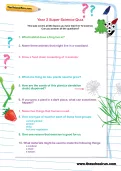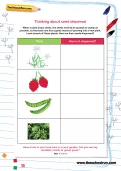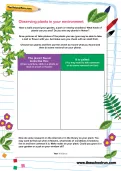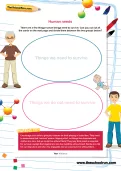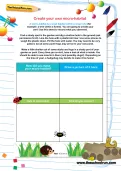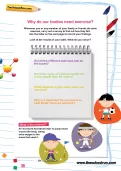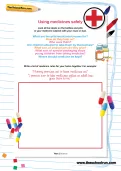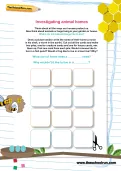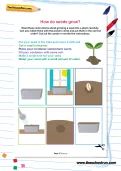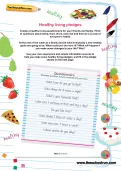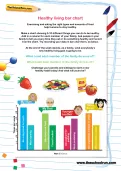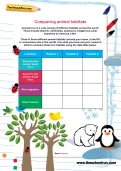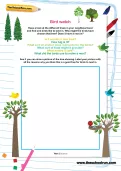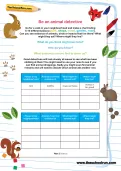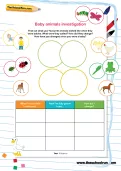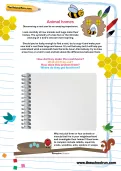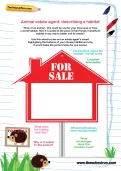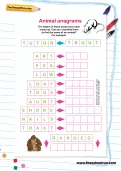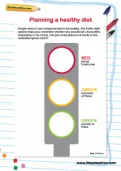This quiz covers all the topics you have learnt in Y2 science. Can you answer all the questions?
or
Register to add to your saved resources
Already a subscriber? to view this content.
When a plant drops seeds, the seeds need to be spread as widely as possible, so that each one has a good chance of growing into a new plant. Look at each of these plants. How are their seeds dispersed?
or
Register to add to your saved resources
Already a subscriber? to view this content.
Have a walk around your garden, a park or nearby woodland. What kinds of plants can you see? Do you see any plants in flower? Choose two plants and then use this sheet to record what you found and then do some research on your plants.
or
Register to add to your saved resources
Already a subscriber? to view this content.
There are a few things human beings need to survive. Can you cut out all the cards and divide them between the two groups below?
or
Register to add to your saved resources
Already a subscriber? to view this content.
A micro-habitat is a small habitat within a larger one (for example: a tree within a forest). Today, you are going to create your own!
or
Register to add to your saved resources
Already a subscriber? to view this content.
Whenever you or any member of your family or friends do some exercise, carry out a survey to find out how they felt. Use the table to record your findings. Look at the results of your table. What do you notice?
or
Register to add to your saved resources
Already a subscriber? to view this content.
Look at the labels on the bottles and pills in your medicine cabinet with your mum or dad. Can you answer these questions about them?
or
Register to add to your saved resources
Already a subscriber? to view this content.
Think about all the ways our houses protect us. Now think about animals or bugs living in your garden or house. Where do animals and bugs like to live? Draw a picture and/or write the name of their home. Cut out all the cards and make two piles, one for creature cards and one for house cards; mix them up. Pick one card from each pile. Would a mouse like to live in a fish pond? Would a frog like to live in a bee hive? Why?
or
Register to add to your saved resources
Read these instructions about growing a seed into a plant carefully. Can you match them with the picture cards and put them in the correct order? Cut out the cards or rewrite the instructions.
or
Register to add to your saved resources
Already a subscriber? to view this content.
Create a healthy living questionnaire for your friends and family. Think of questions about sleep, food, drink, exercise and then do a survey of everyone’s habits. At the end of the week as a family decide what everybody’s new healthy goals are going to be. What could you do more of? What will happen if you make some changes to your life? Why?
or
Register to add to your saved resources
Already a subscriber? to view this content.
Exercising and eating the right types and amounts of food help humans to stay healthy. Make a chart showing 5-10 different things you can do to be healthy. Add in a column for each member of your family. Ask people in your family to tell you every time they eat or do something healthy and record it on the chart. Try recording your data in bar chart form. At the end of the week decide, as a family, what everybody’s new healthy living goal is going to be.
or
Register to add to your saved resources
Already a subscriber? to view this content.
Animals live in a wide variety of different habitats across the world. These include deserts, rainforests, seashores, hedgerows, polar expanses to name but a few. Think of three different animal habitats (around your home, in the UK or somewhere else in the world). Use what you know and your research skills to compare these two habitats using the data table below
or
Register to add to your saved resources
Already a subscriber? to view this content.
This simple activity will help you to build your own greenhouse so that you can observe a seed growing into a plant!
or
Register to add to your saved resources
Already a subscriber? to view this content.
Have a look at the different trees in your neighbourhood and find one birds like to land in. Why might the birds have chosen that tree? Does it have a nest in? Then draw a picture of the tree and label your picture with all the reasons why you think this is a good tree for birds to nest in.
or
Register to add to your saved resources
Go for a walk in your neighbourhood and make a chart listing 5-10 different places (park, shops, wood, garden, road). Can you see evidence of animals, birds or insects that live there? What might they eat? Where might they live?
or
Register to add to your saved resources
Already a subscriber? to view this content.
Find out what your favourite animals looked like when they were babies. What were they called? How did they change? How have you changed since you were a baby?
or
Register to add to your saved resources
Should you be lucky enough to find a nest, try to copy it and make your own bird’s nest from twigs and leaves. It’s not that easy but it will help you understand what a mammoth task the birds have! Alternatively try to draw a bee hive or a bird’s nest and talk about the differences between them.
or
Register to add to your saved resources
Already a subscriber? to view this content.
Think of an animal – this could be one for your local area or from a world habitat. How it is suited to the place it lives? Does it modify its habitat in any way to better suit its needs? Use this sheet to plan out an estate agent’s advert highlighting the features of your chosen habitat and why it would make the perfect home for one animal.
or
Register to add to your saved resources
The letters in these boxes have been mixed up. Can you unjumble them to find the name of an animal?
or
Register to add to your saved resources
Already a subscriber? to view this content.
A simple but effective worksheet that will introduce your child to the idea of a balanced diet.
or
Register to add to your saved resources
